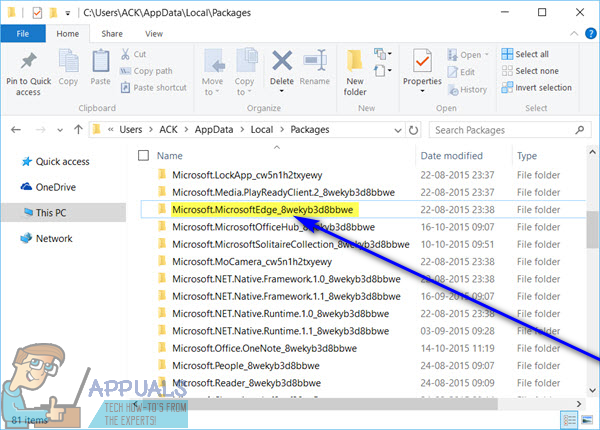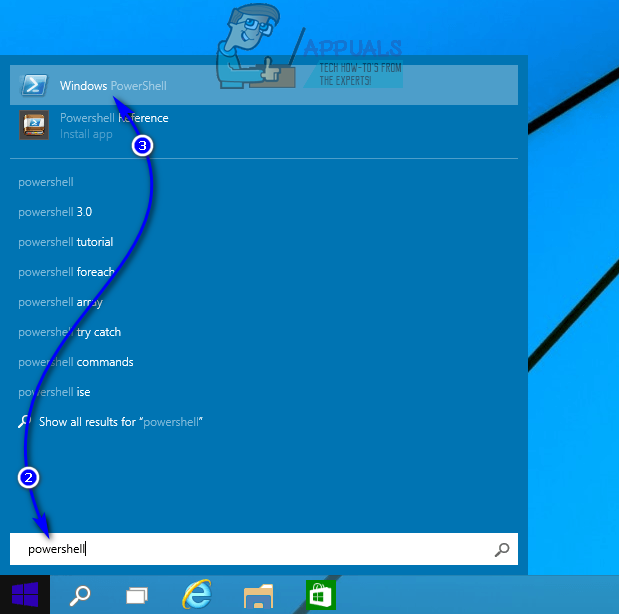How to Reinstall Microsoft Edge
Microsoft Edge is Microsoft’s latest attempt at giving the premiere internet browsers of this day and age a run for their money. Microsoft unveiled Microsoft Edge as part of Windows 10 – the latest and greatest iteration of the Windows Operating System. Edge is a gargantuan upgrade over Windows’ old in-house internet browser – Internet Explorer, but Edge is far from perfect. Windows 10 users have reported a plethora of different problems with Microsoft Edge, and there is a lot you can do to troubleshoot Microsoft Edge-related issues that you are facing – you can reset Microsoft Edge, disable Microsoft Edge or even uninstall and then reinstall Microsoft Edge.
In fact, reinstalling Microsoft Edge is a surefire way to fix a lot of different things pertaining to the internet browser that are known to break. It is to troubleshoot problems with Microsoft Edge, and for a myriad of different reasons, that Windows 10 users need to know how they can reinstall Microsoft Edge. Edge isn’t a third-party program you can uninstall from the Control Panel and then download an installer for from the internet, and not is it a Windows Store app that you can uninstall and then reinstall from the Windows Store.
Microsoft Edge is an application that is hardwired and built-in to the Windows 10 Operating System. That being the case, uninstalling and then reinstalling Microsoft Edge works a bit differently and the usual rules don’t really apply. If you would like to reinstall Microsoft Edge on a Windows 10 computer, however, here’s exactly what you need to do:
- Restart your computer in Safe Mode. If you are not familiar with the steps involved in booting a Windows 10 computer up in Safe Mode, you can simply follow our guide on Safe Mode
- Log in to Windows once your computer has booted up.
- Press the Windows Logo key + R to open a Run dialog.

- Type the following into the Run dialog and press Enter:
C:\Users\%username%\AppData\Local\Packages - Locate and right-click on a sub-folder named Microsoft.MicrosoftEdge_8wekyb3d8bbwe within the contents of the Packages folder, click on Delete in the resulting context menu and click on Yes in the resulting dialog box to confirm the action.
Note: If you cannot delete the folder because you don’t have the required permissions or access to do so, you are going to have to take ownership of the folder before Windows 10 allows you to delete it. If you do not know what you need to do in order to take ownership of a folder on Windows 10, simply follow our guide on can’t delete folder windows 10. Try to delete the folder once again after you have taken ownership of it, and you should be able to successfully do so.
Once the sub-folder specified above has been successfully deleted from the Packages folder, Microsoft Edge will have been uninstalled from your computer. What comes next is reinstalling Windows 10’s resident internet browser. To reinstall Microsoft Edge once you have uninstalled it, you need to:
- Open the Start Menu.
- Search for “powershell“.
- Right-click on the search result titled Windows PowerShell and click on Run as administrator in the resulting context menu. Doing so will launch an elevated instance of Windows PowerShell – an instance that has administrative privileges.

- Type the following into the elevated instance of Windows PowerShell and press Enter:
Get-AppXPackage -AllUsers -Name Microsoft.MicrosoftEdge | Foreach {Add-AppxPackage -DisableDevelopmentMode -Register “$($_.InstallLocation)\AppXManifest.xml” -Verbose} - The command specified above is designed to reinstall Microsoft Edge on a Windows 10 computer. Wait for the command to be successfully executed – you will see a message stating Operation completed within the elevated instance of Windows PowerShell once the command has been successfully executed.
- Close the elevated instance of Windows PowerShell and restart your computer.
When your computer boots up, simply check to make sure that everything is in order and that Microsoft Edge has indeed been reinstalled.